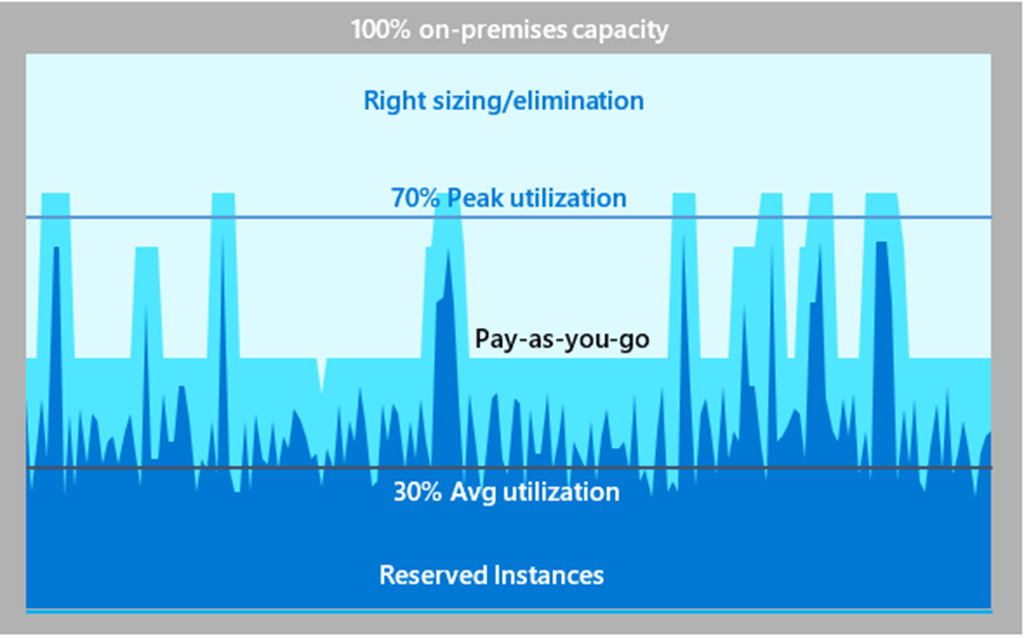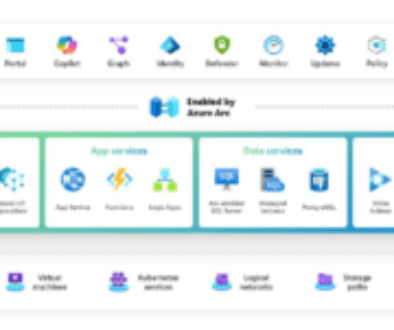If your infrastructure is based on OnPremise servers, chances are you only use a fraction of your global server cores most of the time. Even so, you still need to over-provision your infrastructure to handle peak loads. By considering transferring these peak workloads to cloud, you can significantly reduce your costs by considering sizing the server capacity to your daily needs.
Resizing is one of the key levers you have to control costs and optimize resources. By understanding the economics of cloud and using whatAzure provides, you can identify the virtual server instances that support your needs. This allows you to realize immediate savings by eliminating unused capacity.
Many industries experience spikes in server usage. These demand spikes lead to excess capacity and overspending. When you are able to adjust with Azure, you no longer have to purchase and provision capacity based on these.
For example, one of our customers found that their servers were used the most at specific times of the year. Maintaining an expensive on-premises infrastructure throughout the year was increasing their costs. Once we migrated the first 20% of their applications and platforms to Azure, it became very clear how the variable cost model of cloud contrasted with the fixed model of local data centers and re-evaluated their architecture.
Resizing in cloud means different things to different organizations. One of the first questions to ask is how elastic (vs. static) your environment is to get an idea of the savings potential based on reduced footprint. In the example below, static usage never exceeded 30% of capacity, indicating a huge savings opportunity.

What does resizing look like for you?
Turning off workloads can obviously have an immediate impact on your budget. But how hard should you try to cut it? Do you always know what drives consumption? Are there situations where you cannot immediately adjust the size? For workloads that are still needed, what can be done to optimise these resources?
This optimisation can take several forms:
- Resizing virtual machines: Business and application requirements change, so the anticipated commitment to a specific virtual machine size may be limited.
- Shutting down underutilized instances: With workloads in cloud, use Azure Advisor to search for underutilized resources and get recommendations for resource optimization. This tool can also help determine savings from resizing or shutting down CPUs.
- Interrupting workloads with virtual machines Azure Spot: You can get significant discounts for interruptible workloads that do not need to be done within a specific timeframe.
- Identify workloads that require additional capacity: with Azure, it's easier to meet consumption demands. In fact, the process can be largely automated.
Migration to the Cloud
When migration your workloads to Azure, don't think of it as migration individual server cores. The cloud is infinitely more flexible, allowing for unpredictable workloads. You will only pay for the resources you need. Plan for the peak, but know that you don't have to conserve that capacity. Under consistently high utilization, consumption-based pricing may be less effective at estimating base costs compared to equivalent provisioned pricing.
Be sure to consider the trade-offs between cost optimization and other aspects of the design, such as security, scalability, resiliency, and operability. When using tools such asAzure Advisor, be aware that they can only provide a snapshot of usage during their discovery period. If your organization experiences significant seasonal fluctuations, you can save money on provisioning your core workloads, typically your business applications, by booking instances and virtual machine capacity at a discount. And when those seasonal trends and occasional bursts drive usage up, pay-per-use pricing comes into play.
For these consistent workloads, such as a batch process that runs every day using the same resources, you can get reduced pricing by taking advantage of Azure reservations and receive discounts of up to 72% by reserving your resources in advance.
And speaking of cost optimization tools, use Azure Well-Architected Framework to optimize the quality of your workloads Azure. Read the Cost Optimization Overview to dig deeper into the tools and processes for creating cost-effective workloads. These tools can really help. According to an IDC assessment, customer enablement tools Azure can reduce the cost of operations over three years by 24%.
Planning for growth no longer means over-provisioning for fear of reaching capacity. When you understand the economics of cloud and follow the key financial and technical tips atAzure, your workloads will be much more profitable at Azure.

